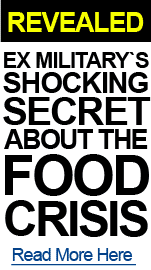 |
| image source |
By Joe Wright
The financial penalties levied against BP for the Gulf oil disaster began as a landmark $4.5 billion settlement, topping the previous largest U.S. criminal penalty issued against Pfizer for marketing fraud. As the BP oil spill has continued to ravage the food chain and the environment, other rulings were added. The second ordered BP to pay $7.8 billion in payouts to businesses and tourist companies affected by the spill. The latter class action suit was signed off on by Judge Carl Barbier in a 125-page ruling. BP continues to face payouts from their $38 billion dollar allotment under SEC fines and fines under the Clean Water Act.
While these settlements are at least a record of BP’s guilt, families who have lost loved ones realize all too well that none of it amounts to what was truly lost. To add insult to injury, BP is still in business; in fact, strong as ever. Just days after the EPA lifted their one-year ban, the company has been awarded 24 new contracts valued at more than $40 billion.
Just after the initial $4.5 billion fine was announced, Huffington Post sardonically noted the following: “BP Oil-Spill Fine So Horrible, BP’s Stock Price Only Rises 1 Percent,” One of the five ways they put this in perspective was the following:
Sales And Profits: BP in 2011 recorded revenue of $234.25 billion, with net income of $16 billion, according to data tracker FactSet. In other words, BP could pay even a $10 billion penalty with just nine months’ worth of profits. A $4.5 billion penalty would wipe out a little more than a single quarter’s profits. In this case, it will be paid out over five years — beginning in 2013 — meaning the hit to quarterly profits will be much gentler. BP has more than enough cash to cover this, meaning it won’t have to borrow money to pay the costs, saving on interest payments. This latest Friday night ruling awaits its Wall Street reception in a short session on Monday before closing for Christmas. You can follow the stock price HERE. Every indication is that there will be little to no effect.
And since the time of that article, posted 11/15/2012, BP stock has risen another 17.42%.
Despite that, the $40 billion in new contracts itself quickly replaces nearly all that was, or ever will be, lost in fines and legal actions. It also says a lot about how much “protection” is part of the Environmental Protection Agency. The bids entail rights to specifically explore the Gulf of Mexico, while also hinting at a special threat agreement that has taken place between BP and the EPA.
Under the agreement, BP will implement stronger safety and corporate governance rules, and will be monitored by an EPA-approved independent auditor over the next five years. BP had filed a lawsuit against the EPA to have the ban lifted, but will now drop the suit as part of this month’s agreement. (Source) [emphasis added]
So, as researchers still continue to gauge the long-term health and economic effects of BP’s criminality, the EPA has granted BP the right to explore the very same area that they already devastated … and profit unhindered once again. And if anyone is actually placated by the “EPA-approved independent auditor” just remember Ground Zero.
 The EPA quickly went on the record to assure people at Ground Zero following 9/11 that air quality was not an issue. Then-administrator Whitman stated at the time:
The EPA quickly went on the record to assure people at Ground Zero following 9/11 that air quality was not an issue. Then-administrator Whitman stated at the time:
“We are very encouraged that the results from our monitoring of air quality and drinking water conditions in both New York and near the Pentagon show that the public in these areas is not being exposed to excessive levels of asbestos or other harmful substances,” Whitman said. “Given the scope of the tragedy from last week, I am glad to reassure the people of New York and Washington, D.C. that their air is safe to breathe and their water is safe to drink,” she added. (Source)
This, of course, has led to an untold number of people being negatively impacted, including an astounding number of first responders who have battled ever since to be compensated for the now-established cover-up.
…the CDC has confirmed that out of several hundred thousand first responders near the scene of Ground Zero, and an estimated 100,000 working the pile, more than 65,000 first responders were sickened by exposure to the toxic dust and later enrolled in a health monitoring program. Federal health authorities have tied some 58 types of cancer to the police, fire fighters, EMTs, military. National Guard and volunteers who later became ill from working the site. (Source)
I offer the Ground Zero example, because that event is the exact parallel that was drawn by an epidemiologist in the aftermath of Deepwater Horizon – and she worked for the petroleum industry to address negative health impacts:
“With the World Trade Center, there have been unpredictable adverse health effects to the populations that were exposed and not just the workers,” she said. “In this case, we have a soup of chemicals from the crude, chemicals from the dispersants and pollutants that were already in the water. Who can say how they will interact?” (Source)
Sure, who can say?
Meanwhile, the actions of the EPA continue to speak volumes.
Related Activist Post Article:
Top 10 Most Dangerous U.S. Government Agencies
Recently by Joe Wright:
- Kids For Cash Scheme Exposes Horrors of For-Profit Prisons: Documentary
- Is Solitary Confinement About to be Outlawed in the U.S.?
- New Snowden Docs Confirm NSA’s Role in Drone Killings


Be the first to comment on "EPA Lifts Ban, BP Wins $40 Billion in New Contracts"